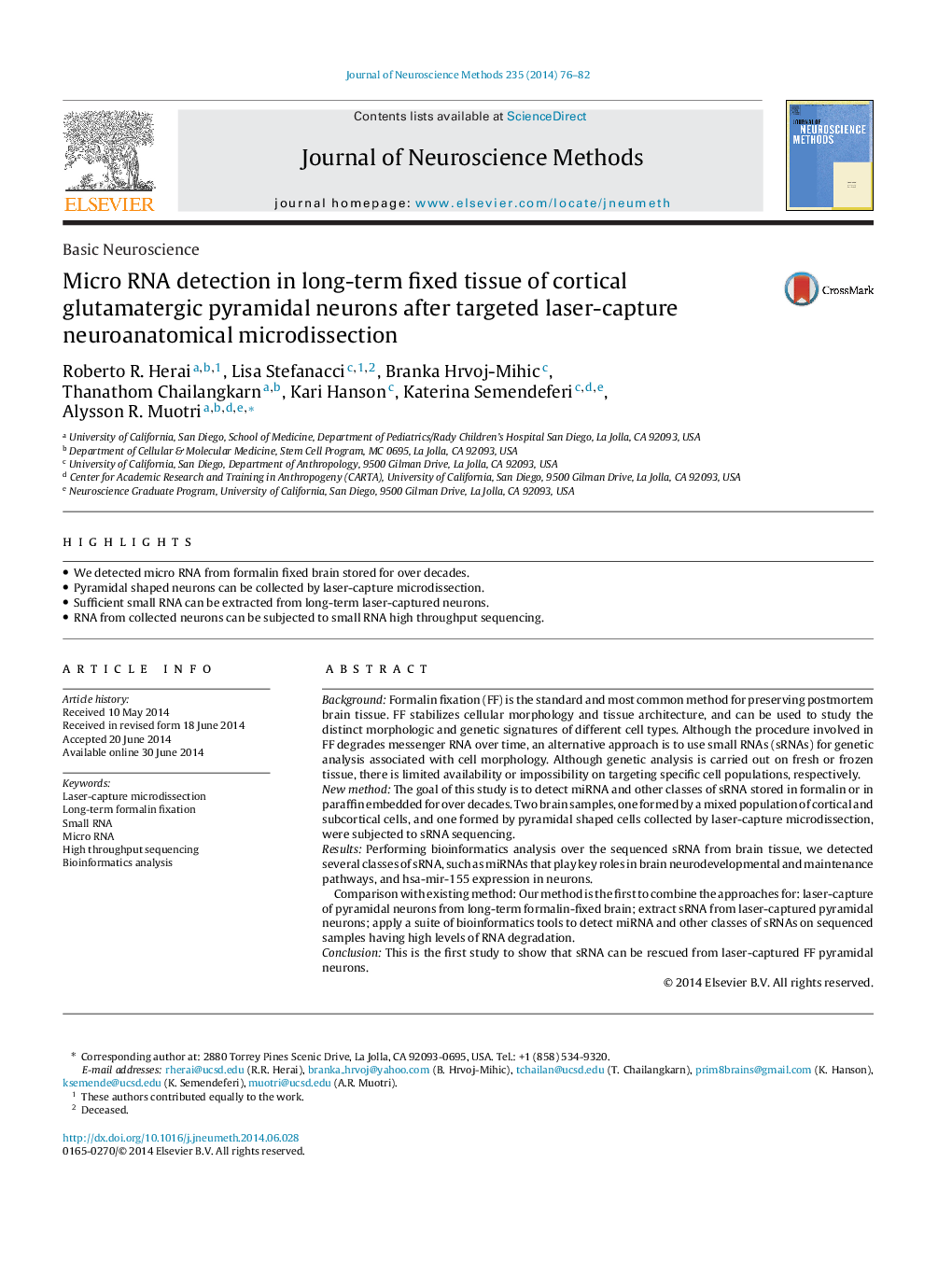| Article ID | Journal | Published Year | Pages | File Type |
|---|---|---|---|---|
| 6268610 | Journal of Neuroscience Methods | 2014 | 7 Pages |
â¢We detected micro RNA from formalin fixed brain stored for over decades.â¢Pyramidal shaped neurons can be collected by laser-capture microdissection.â¢Sufficient small RNA can be extracted from long-term laser-captured neurons.â¢RNA from collected neurons can be subjected to small RNA high throughput sequencing.
BackgroundFormalin fixation (FF) is the standard and most common method for preserving postmortem brain tissue. FF stabilizes cellular morphology and tissue architecture, and can be used to study the distinct morphologic and genetic signatures of different cell types. Although the procedure involved in FF degrades messenger RNA over time, an alternative approach is to use small RNAs (sRNAs) for genetic analysis associated with cell morphology. Although genetic analysis is carried out on fresh or frozen tissue, there is limited availability or impossibility on targeting specific cell populations, respectively.New methodThe goal of this study is to detect miRNA and other classes of sRNA stored in formalin or in paraffin embedded for over decades. Two brain samples, one formed by a mixed population of cortical and subcortical cells, and one formed by pyramidal shaped cells collected by laser-capture microdissection, were subjected to sRNA sequencing.ResultsPerforming bioinformatics analysis over the sequenced sRNA from brain tissue, we detected several classes of sRNA, such as miRNAs that play key roles in brain neurodevelopmental and maintenance pathways, and hsa-mir-155 expression in neurons.Comparison with existing method: Our method is the first to combine the approaches for: laser-capture of pyramidal neurons from long-term formalin-fixed brain; extract sRNA from laser-captured pyramidal neurons; apply a suite of bioinformatics tools to detect miRNA and other classes of sRNAs on sequenced samples having high levels of RNA degradation.ConclusionThis is the first study to show that sRNA can be rescued from laser-captured FF pyramidal neurons.
